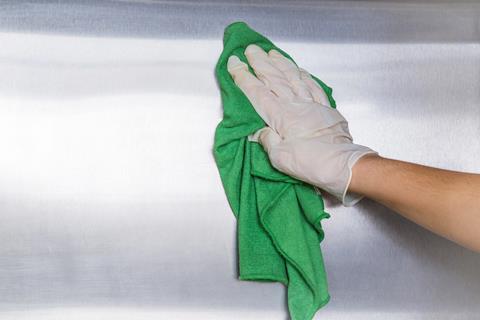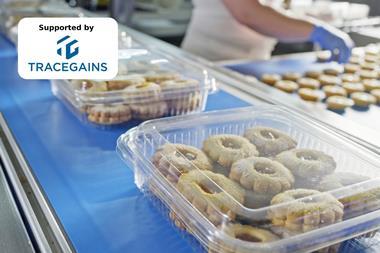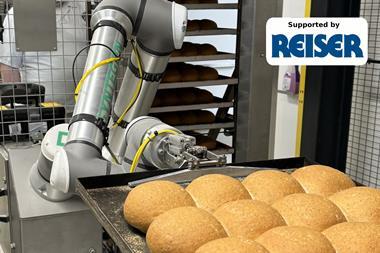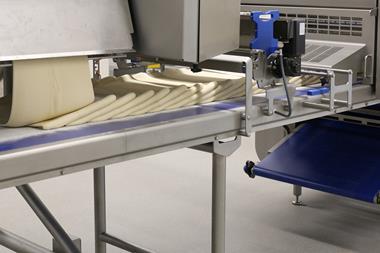An oven is the heart and soul of a bakery, and for many bakers that heart and soul has to be a deck oven.
Perhaps best associated with bread, deck ovens are the ideal bakery workhorse and capable of producing baked goods from soft rolls to confectionery.
“While most suitable for products requiring a stone-baked appearance or turning process, for example pitta, naan or sourdough breads, deck ovens are suitable for a full range of bakery products,” says Andrew Jones, test baker at equipment supplier Tom Chandley .
It’s a view echoed by Mono Equipment, which says its deck ovens will produce artisan and sourdough breads, oven-bottom breads and high-end confectionery products thanks to single-piece, heavy sole plates that evenly distribute heat.
As with any piece of equipment, key to getting a return on what can be a considerable investment is ensuring it is used efficiently.
“With energy prices at an all-time high, energy efficiency is increasingly becoming an important factor in choosing the right oven,” says Chris Huish, Mono director of independent sales.
Jones advises that to use the oven most efficiently in terms of energy, always ensure it is set at the correct baking temperature before loading products.
“Refer to manufacturers’ temperatures and settings to ensure the set temperature recovers within the optimum time, reducing energy consumption,” he says.
Jones adds that products requiring the hottest temperature should be baked first, reducing the temperature as required throughout the day.
Failure to set up a regular service and maintenance plan can result in your entire bakery failing to produce baked goods for several days
Businesses should also always try to maximise the capacity of the oven chamber by considering different products that can be baked at the same temperatures.
Mono ovens feature a touch-screen controller that enables each deck to be separately controlled, only heating decks being used. They also have a Sleep Mode function that reverts the oven to a pre-set, optimum hold temperature after a given period of inactivity to reduce energy consumption between bakes.
Planning how an oven will be used across a working day is also an important strategy in maximising efficiency. Chandley advises turning on as many decks required for a streamlined production flow, turning off any surplus decks throughout the day.
The ability to program ovens in advance will also boost efficiency.
“Our deck ovens feature a seven-day timer that can pre-programme ovens to reach the desired optimum pre-bake temperature at a specific time each day,” says Huish. “The ovens are immediately productive right from the start of the shift.”
But no amount of efficiency planning will help if an oven fails, and it is essential to ensure equipment is properly cleaned (see above) and serviced regularly.
“Failure to set up a regular service and maintenance plan can result in your entire bakery failing to produce baked goods for several days, which is clearly a very expensive mistake,” points out Duncan MacFarlane, bakery sales director at Scobie McIntosh, who recommends bakers set up a service and maintenance plan as soon as they purchase equipment.
“We think of it like a car. If you don’t have a regular service, major components can get damaged, causing you to be off the road for some time in addition to costing a significant amount to repair or replace products,” he adds.
With careful use, planning and regular maintenance, your deck should be dealing you a good hand for years to come.

Coming clean
Good cleaning practice is essential to maintaining the operation of a deck oven and should be carried out according to the manufacturer’s guidelines.
Bakers should have a daily and weekly cleaning regime, advises Mono Equipment.
Daily: once it is cooled, the oven should be brushed out to remove any debris or dust from the sole plate, and the outside wiped down with a mild detergent.
Weekly: the same should be done but the top should also be brushed to remove any dust build-up. Check that the wheels are clean and functioning, thus easy to manoeuvre.
Tom Chandley offers further advice for heavy-duty cleaning of deck ovens.
“An industrial degreaser can be used to manufacturers’ recommendations, ensuring all PPE (personal protective equipment) is applied,” says Tom Chandley test baker Andrew Jones. “Internally, any spillages can be cleaned with a metal scraper or wire brush and removed from the oven.”
Jones suggests bakers should avoid using water on ceramic stone tiles as these are porous, and that any area that becomes too wet can cause hot spots on the oven base.
Good cleaning practice needs to be supported by regular servicing, and possibly a preventative contract.
“It is important to have a deck oven serviced regularly – ideally twice a year – as it is a vital piece of equipment in a bakery,” advises Jones.
Cooking pizza in just 60 to 120 seconds
Sveba Dahlen has this year launched its High Temp pizza oven, designed to bake pizza at up to 500°C.
The manufacturer claims the oven’s pizza stone, traditionally made in Italy, plus a highly efficient heating element which provides a fast and even heat distribution, makes it one of the most energy-efficient high-temperature ovens on the market.
Also suitable for baking other breads that require high temperatures, such as lavash, flatbread and pitta, the oven reaches the chosen temperature in around 30 minutes and rapidly returns to the set temperature if the door is opened.
Sveba Dahlen advises that cooking pizza at high temperatures requires a dough with a high water content of 60-70%.



























No comments yet